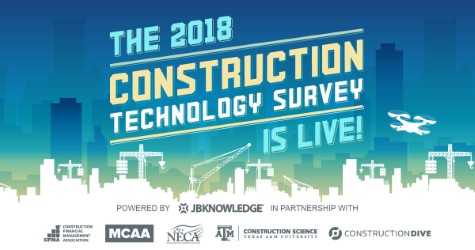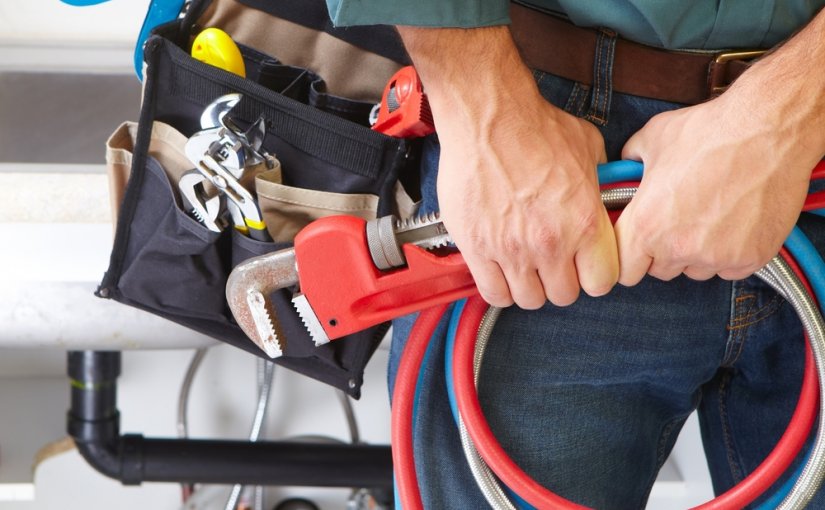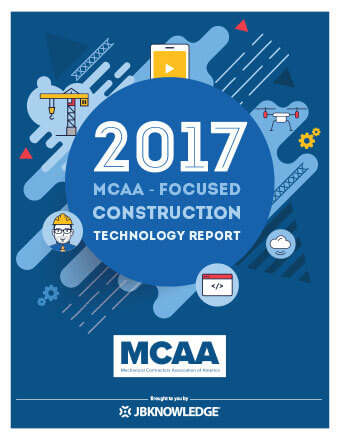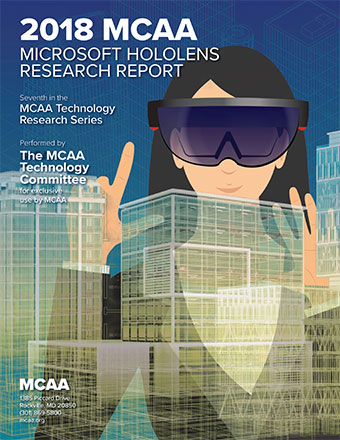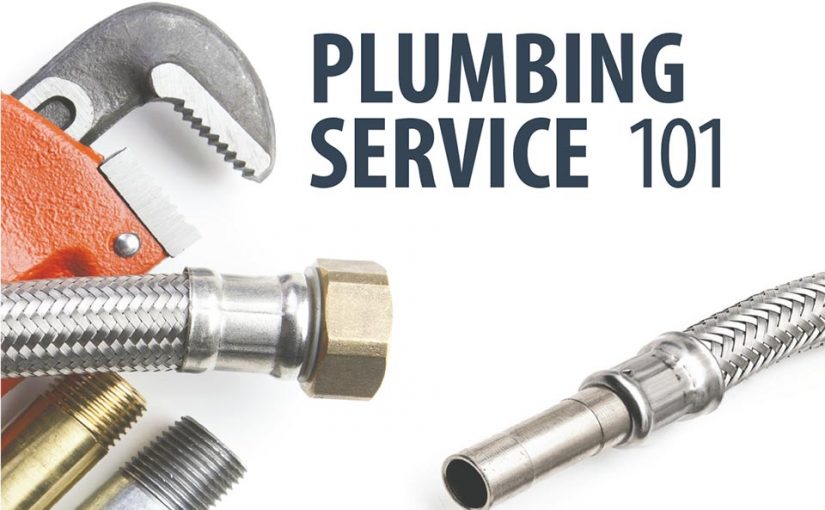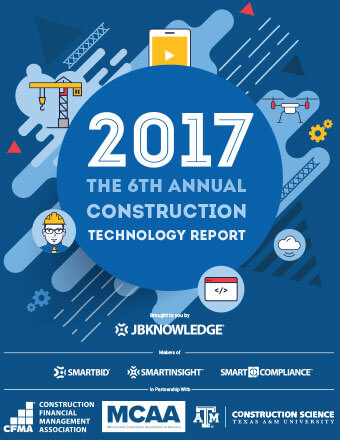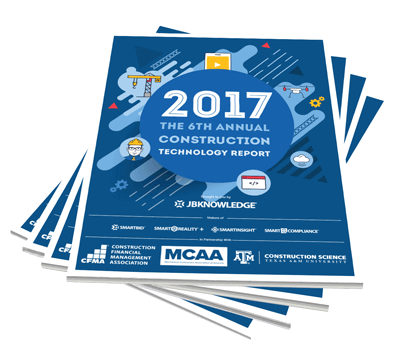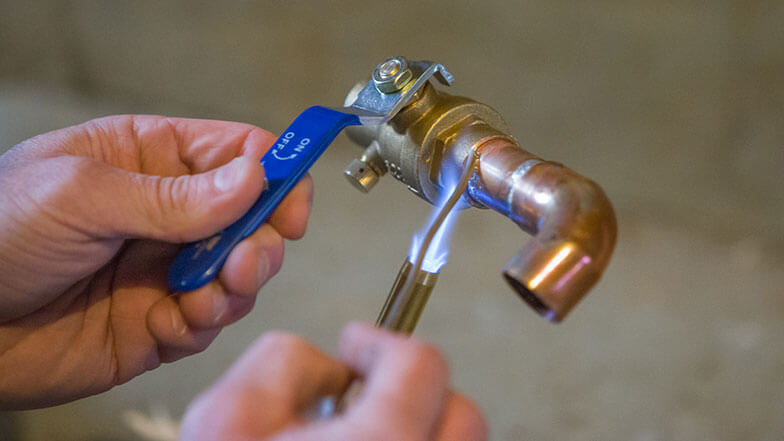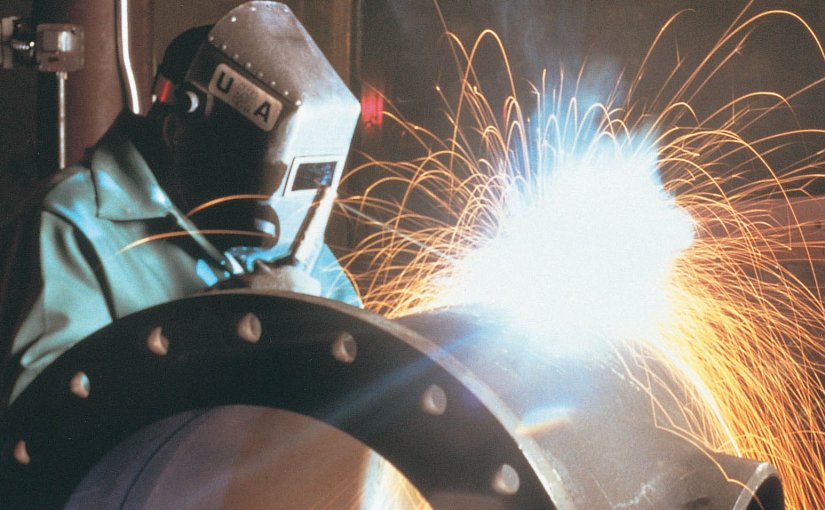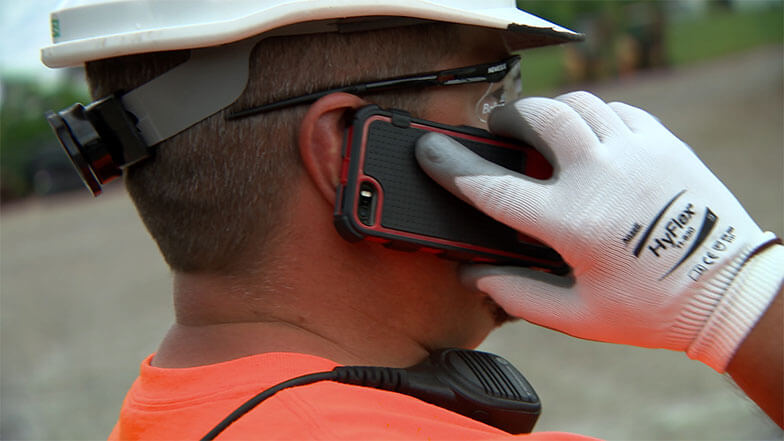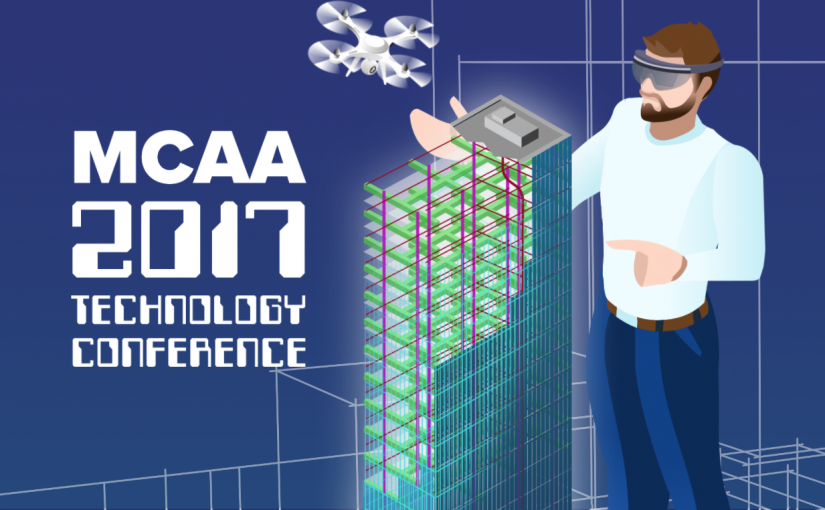Category: Plumbing
Protect Your Fitters, Plumbers, and Service Techs From the Extreme Heat By Reminding Them About Heat Illnesses and Prevention Methods
Now is a great time to remind your fitters, plumbers, service technicians, and their supervisors about heat illnesses and how to prevent them. The heat illnesses we’re most concerned about include heat stroke, heat exhaustion, heat syncope, and heat cramps.
HEAT STROKE: The body loses its ability to sweat and can’t control its temperature. Heat stroke is a medical emergency.
HEAT EXHAUSTION: The body sweats away too much water and salt.
HEAT SYNCOPE: The body’s blood pressure becomes too low resulting in dizziness or fainting.
HEAT CRAMPS: The body experiences painful muscle spasms.
To help prevent heat illnesses:
- Provide training for all affected workers on heat illnesses and prevention methods.
- On extremely hot days, reduce the physical demands on your workers as much as possible.
- Work tasks that are particularly physically demanding should be performed early in the morning or later in the afternoon avoiding the hottest part of the day.
- Provide a constant supply of cold water.
- Encourage your workers to drink at least a full cup of cold water every 15 to 20 minutes throughout each day.
- Encourage your workers to avoid drinking alcohol, caffeine, and high sugar content drinks during periods of extremely hot temperatures.
- Allow frequent rest periods in cool shaded areas.
- Encourage your workers to wear light-weight, light-colored, loose-fitting clothing made of breathable fabrics that are also designed to filter out harmful UV rays.
- Keep a close watch on workers who are at higher risk for heat illnesses. For example, workers required to wear hot personal protective equipment, such as arc flash gear, welding gear, respirators, etc., and overweight workers may be at higher risk.
PCA Debuts New Seminar for Plumbing Service Contractors
This summer, the PCA is beta testing a new seminar on Plumbing Service to its members. The Plumbing Service Roundtable is designed to be an efficient, one-day seminar that will allow attendees to be out of the office as little as possible.
The roundtable is scheduled for June 21st at the Hilton Chicago O’Hare, conveniently attached to the airport. With a program scheduled from 10:00 AM – 4:00 PM, attendees will have the ability to fly in and out the same day to maximize their time out of the office.
Sessions will primarily be led by contractors with the intention to open up dialog between attendees and share best practices. The curriculum will include content on recruiting, training, technology, inventory, sales and truck setup.
With this new session being a beta-test, registration will be limited to 35 attendees and a limit of only one attendee per company. It is also recommended that attendees already be engaged in plumbing service at some level in order to share their experiences.
Registration is open and available on a first-come, first-served basis. For more information, download the brochure or register online.
New Report Looks at How MCAA Members Use Technology
The MCAA-sponsored 2017 Construction Technology Report by JBKnowledge took an in-depth look at how the construction industry utilizes technology, software and IT. This week, MCAA released an “MCAA Focused” Report that analyzed the responses of MCAA and MSCA members. It looked at how MCAA members use and estimate BIM costs, track productivity, and emerging tech tools.
Part of the report focused on how MCAA members compare to the rest of the construction industry. It showed that MCAA members have a greater adoption of BIM and have higher use rates for BIM with especially with coordination and fabrication.
The MCAA focused report also explored how MCAA members are tracking BIM hours and estimating their costs. It found that far too many contractors do not track their BIM hours per project and as a result cannot use those hours to estimate the amount of time needed to perform BIM on a project.
The report also looked at emerging trends that contractors are currently testing. While the industry at large favors drones by a wide margin, MCAA members are far ahead of the industry on fabrication and modularization.
HoloLens Research Report Reveals New Advantage for Contractors
What was once thought of as science fiction or construction fantasy is starting to make its way on to construction job sites. In late 2016, Microsoft released developer editions of their mixed reality headset, called the HoloLens. It represented the first time that a big tech company had offered a stand-alone headset that could overlay holograms in the real world that would stay in place as you moved around and changed your perspective.
 For the construction industry, it offers a new path towards design, collaboration and visualization. The HoloLens allows you to take BIM models and overlay them on job sites or in conference rooms. You can see how your designs exist in the spaces you are building in. It allows you to move around them to check for collisions, plan for installation and visualize in real-space the plans that were once only on paper.
For the construction industry, it offers a new path towards design, collaboration and visualization. The HoloLens allows you to take BIM models and overlay them on job sites or in conference rooms. You can see how your designs exist in the spaces you are building in. It allows you to move around them to check for collisions, plan for installation and visualize in real-space the plans that were once only on paper.
In MCAA’s Technology Research Series seventh installment, the MCAA Technology Committee explored the capabilities and potential of the Microsoft HoloLens for mechanical, plumbing and service contractors. Over the course of a year, the committee tested and proved that these devices are not only capable of making contractors more efficient, they can be seen as an immediate differentiator to your competition.
The report looks at how the HoloLens can be used to perform common processes for contractors. While it offers some extraordinary potential for jobsite planning and marketing, some areas like service had a limited role. These limitations stemmed from a lack of software that was designed for tasks important for service work.
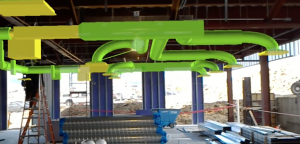
Software plays a very important role in the usefulness of the device. To their credit, Microsoft was very savvy in the rollout of their new product. Right from the beginning, they partnered with leading software developers from multiple industry sectors to create apps designed for the HoloLens. This allowed for access to software applications for a lot of targeted applications, even during the roll-out of their developer editions.
Thankfully, one of the companies they partnered with was Trimble. Through Microsoft’s collaboration, Trimble developed tools for the construction industry to visualize construction models in real space. In the past year, more software developers have created solutions for the construction industry. The committee evaluated these apps in the report and made recommendations for software depending on the workflows that you intend to use the HoloLens for.
Software available today make it possible to pull BIM models into the device and visualize with extremely little training. They also offer capabilities in workflows that are not available on any other device. For contractors that are already working with BIM, this is another tool to increase efficiency and productivity.
The MCAA Research Report goes through five workflows to test the effectiveness of the device. In some cases, although a HoloLens could be used to perform a task, it was not the most efficient way of doing it. For other tasks it presented options and efficiencies that simply were not available using any other tool.
The HoloLens has proven to be an effective tool ready for the industry, the question is, how can your company ready to benefit from its use. To learn more, download the report and watch for updates. Software is in development by leading industry manufacturers that should push the capability of the HoloLens even further. The report is available to MCAA and MSCA members as a complimentary benefit of membership. With the release of new applications scheduled for the HoloLens, the report will be updated throughout the year.
With New Tax Legislation, MCAA Contractors are Still Able to Claim R&D Tax Credits for BIM and Design
During the negotiation process of the Tax Cuts and Jobs Act at the end of 2017, the tax credit for R&D spending was temporarily removed. Fortunately, MCAA and others worked hard to ensure that the final bill re-inserted the language for the Research Tax Credit (“RTC”) and made changes that potentially increase the credit by more than 20%. With the RTC in place, contractors are able to continue to claim tax credits for qualifying BIM and design work. Unfortunately, many mechanical and plumbing contractors are unaware that they can even claim part of their design and bid work for these tax credits.
This article is intended to offer an overview of the Research Tax Credit for mechanical contracting personnel presented in general non-tax terms, wherever possible. The credit is, however, “tax based”, and as such, the inclusion of all of the applicable rules for every situation is not possible in a brief discussion.
In order to qualify for the research tax credit, activities must pass several tests. Although these tests are fairly specific, “qualifying activities” are generally much broader than many people think. When contractors hear the term “research” they often associate the term with scientists wearing white lab coats who are mixing chemicals in beakers. However, the Internal Revenue Code definition of research, as defined under IRC §41, is much broader than this traditional definition. As a result, many contractors may typically associate a large portion of their research activities as “routine” or “ordinary”, when in fact many of these activities might qualify for the Research Tax Credit.
To successfully build a structure, there may be experimentation or an iterative process on technical design issues and the installation process to properly build it. Although it might seem complicated if you are not claiming these credits, many contractors have been doing so for years. Before you begin, it is recommended that MCAA members contact their tax professionals to ensure that they are properly claiming the appropriate costs and activities under the RTC.
To begin, the Internal Revenue Code states that the activities “must be intended to discover information to eliminate technical uncertainty concerning the capability or method for developing or improving a product or process, or the appropriateness of the product design”. The Code also requires a “process of experimentation” involving the evaluation of alternatives, confirmation of hypotheses through trial and error, testing and/or modeling (this can include iterative steps in evaluating design alternatives, alpha/beta tests, pilot trials, scale-up testing, marketing/field tests directly associated with the R&D efforts, qualification Trials, etc.). Finally, wages, supplies, and contracts associated with qualifying activities qualify. The expenditures can also be either capital or expensed items.
Broadly, this includes any activity where there is some technical uncertainty involved in the development or improvement efforts- i.e., is there a technical problem that needs to be solved before you can effectively launch/implement this equipment design, software, product, process, prototype, etc.? Personnel who are directly engaged in resolving the technical issues will qualify and those individuals who have a support role will also qualify (i.e., performing alpha/beta/unit testing, collecting data or writing programs to collect data, supervision, technical project management, etc.)
Uncertainty exists if the information available to the contractor does not establish the capability or method for developing or improving the product/process or the appropriate design of the product/process. The required level of uncertainty may be established in instances where your work requires the resolution of technical issues when either designing the mechanical and plumbing system or working from a set of drawings that are incomplete or need modification to function.
The definition of activities that qualify for the credit is fairly broad and the driver for the effort can be to produce a new, better or more competitive product/process, to increase reliability/quality, to increase general product/process safety, to respond to new federal/state requirements, to reduce costs or increase speed/efficiency, etc. Furthermore, the success or the degree of technological advancement is not a factor.
Below is a representative sample of activities a taxpayer would typically perform, which often times are misclassified as “routine” or “non R&D” related:
- Evolutionary advancements to the functionality, performance, reliability or quality of an existing product (Change orders for process improvement);
- Development of prototypes or models to prove out conceptual ideas (Including BIM);
- Experimentation to verify if an existing construction technique or process can support a new product with differing characteristics (Testing point loads);
- Experimentation to verify if a new or existing construction technique or process can be implemented in a new or different geographic region, new environment, or different industry/application;
- The design and development of custom equipment, tooling, molds and/or dies;
- The development of microcode used within machinery or robotics;
- The redesign of an existing construction or building process to improve efficiencies, increase safety or reduce operating expense;
- Testing to prove out the use of new materials in existing products;
- Plant and/or Process scale-up activities;
- Qualifying “Bid and Proposal” efforts; and
- The development of custom software that is either intended to be used internally or sold, leased or licensed to third parties as a commercial product offering.
However, simply because some items may be new, unique, customized or involve special problems does not mean that they will automatically qualify for a credit. For instance, there may be options or choices in regard the application of standard engineering techniques, but no uncertainty in regard to the resolution of a technical issue facing the project team. Qualifying activities that are intended to resolve technical uncertainties should also involve some iterative type of testing, experimentation, the consideration of alternatives, trial and error evaluations, prototyping, validation, etc.
Thus, although no qualifying activity might occur for most HVAC systems (even where custom designs are involved), technical uncertainty might arise on mechanical engineering and/or design efforts in instances where there are unusual requirements involving, for example: complex temperature, humidity, pressure, ambient air ratio range controls with differing protocols for numerous chambers/rooms; the need to design for particulate and/or chemical fume control/mitigation where the chemistry might require special construction materials; unusual space limitations, local regulations, cost mandates, etc.; instances where numerous alternative methodologies for technical solutions are necessary; development of technical alternatives to address repeated system failures; etc.
The PATH Act of 2015 made the Research Tax Credit permanent but also broadened the impact of the credit for many small to mid-sized businesses. Starting January 1, 2016, small businesses that meet certain criteria can also use the Research Tax Credit to offset the FICA employer portion of payroll tax, with a credit cap of $250,000 for each eligible year.
– – –
Mike Foley is the Managing Partner at Foley & Smith, LLC, a firm specializes in Research Tax Credits.
Mike D’Allesandro is the Managing Director at Research Tax Credits, LLC
Webinar Offers the Latest in Tech Trends
For the third consecutive year, MCAA has sponsored the JBKnowledge Construction Technology Report, offering MCAA members salient insight on the technology habits of today’s contractors. On Tuesday, January 30, James Benham, CEO of JBKnowledge will present a live webinar showcasing the reports findings and providing further insight to its data.
This webinar will be provided as a free benefit to MCAA member. The report is already available for download in advance of the webinar.
Construction Technology Report Reveals Interesting Insights
JBKnowledge released the year-end Construction Technology Report. Sponsored by MCAA, the survey interviewed nearly 2,700 construction professionals across the industry to research technology, processes, spending and R&D. Not all of the reports’ findings were intuitive. While trends on BIM adaption and mobile devices continued to rise, the number of different applications contractors are using declined. The most surprising finding came from type of software contractors have recently replaced and implemented.
This year, the report specifically asked which workflow software contractors most recently implemented. Nearly 26% of respondents indicated that they had most recently updated their accounting software. Considering the impact on business and the intensity of the training, this is a very surprising result. The report also indicates that part of the reason for the trend was the correlation to new ERP software, indicating that smaller companies maturing into ERP systems could have accounted for a portion of the results.
Two other trends that are important for our industry involved prefabrication and BIM. The two concepts are intertwined as many MCAA members begin using BIM to improve their fabrication productivity and capabilities. Prefabrication use has risen over 12% from 2016 (19.9% total in 2017) making it the second highest trend that all contractors are experimenting with. For MCAA members interested in learning more about maximizing their fabrication operations, register for the 2017 Fabrication Conference on January 15.
In 2017, contractors are becoming more confident in maximizing their BIM capabilities. More companies are reporting that they now have BIM/VDC departments of more than two people. Kelly Doyle, JBK’s SVP of Consulting summarized it, “Based on the responses, the breakpoint for a full VDC team is about $20 million in total revenue. This is similar to the breakpoint for IT departments as well. Once contractors hit that revenue volume, their overhead has the capacity to add more full time staff to productivity improvements.”
A startling trend however is that even with the increased adaption to BIM, 28% of the respondents still said that they do not bid on BIM projects. 52% of respondents have some in-house BIM capability and roughly 20% simply outsource the process.
On January 30, James Benham, the CEO of JBKnowledge joined Sean McGuire to present a webinar to MCAA members of findings from the study. Watch the webinar below:
MSCA’s Popular Plumbing Service 101, Fifth Webinar is February 8th and Registration is Now Open!
This fifth webinar in the MSCA original series, Plumbing Service 101, Operations Part 1, will explore the key personnel and organizational structure required to establish, sell, and grow a viable plumbing services division.
There are many similarities between HVACR and plumbing operations. While some of a company’s existing resources can be shared, others are unique to plumbing. Failing to take these exclusive requirements into consideration can spell disaster. This webinar will explore the key personnel and organizational structure required to establish, sell, and grow a viable plumbing services division.
The webinar is scheduled for February 8th at 1:00 pm EST, sign up today!
Soldering Lead-Free Valves Takes Added Practice
Plumbing manufacturers have made great efforts to remove as much lead as possible to comply with regulations established under the Safe Drinking Water Act. In order to meet these requirements, most manufacturers have used brass alloys containing small amounts of silicon or bismuth to improve machability. In the following years, most plumbers learned how to effectively make joints with the new alloys, but sometimes it is not apparent how complete the fill is in joints unless they are tested.
A recently released NCPWB technical bulletin demonstrated how joints that appear to be correctly soldered could often be frayed. The bulletin’s author, Walt Sperko, provided examples of incorrect joints and guidance. Pre-heating the tube more than the casting is critical for no lead copper alloys. This is because casting’s thermal conductivity is much lower than copper.
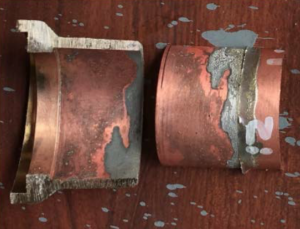
When the plumber does not spend enough time on heating the tube, the solder has a tendency to only partially fill the joint. While silicon-based alloys were found to be more difficult to wet properly, both proved insufficient with poor technique.
NCPWB members can also download the Soldering Procedure Specification resource SPS-107-1 to better understand the welding procedures for brass and lead-free alloys.
Soldering Lead-Free Valves? Beware!
Are you planning to solder in a couple of dozen 1-1/2 inch brass control valves in that heating system you are installing in that high-rise building? Brass valves, of course, are castings and all the castings you buy today are lead-free. Does your journeyman who can solder a wrought 1-1/2 inch copper coupling with ease make the same quality joint when one side is a heavy-wall cast valve body? How about if the castings you bought are alloyed with silicon for machinability improvement rather than with bismuth?
Want to Educate Your Workers About Workplace Distractions? This Video Can Help!
MCAA’s Workplace Distractions Safety Training Video will help your workers recognize and avoid the most common industry-related workplace distractions.
Your workers will learn about the four most common types of distractions:
- Driving distractions
- Electronic distractions
- Environmental distractions
- Personal distractions
There’s More…
Accompanying materials are also available to assist you in highlighting key training points, documenting worker training and confirming that workers understand the training concepts:
Highlight key training points
Document worker training
Download the Documentation Sheet
Confirm that workers understand the training concepts
Want Even More Safety Resources?
MCAA has you covered, with a full range of resources to help you protect your workers from injury and comply with applicable safety regulations. Here’s where to find them:
On our Direct Links to MCAA & MSCA Safety Resources page, where they’re listed by category with links.
In the Resource Center, where you can use the blue Refine Your Search bar to pinpoint exactly what you’re looking for.
Have questions or need personal assistance?
Contact MCAA’s Pete Chaney.
MCAA Tech Conference – Practical Solutions for a Changing Industry
Contractors are facing a dynamic environment that is constantly presenting us with new challenges. The MCAA Technology Conference is an opportunity to learn how to face these conditions and and create solutions for your company. This year’s conference is designed to bring about new ideas from the industry’s best technology experts as well as contractors that have been on the leading edge of construction technology.
Small ideas can make a big difference to your company. The MCAA Technology Conference is an event that doesn’t just provide a few small takeaways, but a wealth of ideas that can be applied across your business. Technology is providing so many new tools, processes and software that even the most established contractors are having a hard time keeping up. This conference is your crash course on the latest tech trends in the industry and how other contractors are taking advantage of them.
MCAA and MSCA host many educational events each year, but this conference is the only one that is MEP-focused with peers sharing ideas on the latest technologies. Don’t miss this terrific learning opportunity.
MSCA’s Plumbing Service 101 – Cash is King Webinar is Now Available!
If you missed Plumbing Service 101, Module 4 – Cash is King, don’t worry, you can now access the webinar in both MSCA’s Resource Center and in Archived Webinars.
This fourth webinar in the MSCA original series, Plumbing Service 101, Cash is King, focuses on the financial aspects of operating a successful plumbing service business. Some of the topics discussed include the cost of an hour of service; flat rate pricing versus hourly billing; the components of labor burden; pre-qualifying customers; billing and collections; handling paperwork; and initial expenses required for start-up.
Each module consists of a 60-minute webinar and corresponding workbook. Webinars and workbooks are free to MSCA/MCAA members.
Access the webinar in Archived Webinars
MSCA’s Plumbing Service 101 – Finding and Developing Great Plumbing Techs Webinar Now Available!
If you missed Plumbing Service 101, Module 3 – Finding and Developing Great Plumbing Techs, don’t worry, you can now access the webinar in both MSCA’s Resource Center and in Archived Webinars.
This third webinar in the MSCA original series, Plumbing Service 101, Finding and Developing Great Plumbing Service Technicians, provides an overview of where and how to find talented individuals and how best to train them. You will learn about the important traits to look for in your recruiting efforts and the skills needed for success.
In this webinar, Tom Bigley, UA Director of Plumbing Services, shares relevant information on UA Plumbing Service Training Programs.
Each module consists of a 60-minute webinar and corresponding workbook. Webinars and workbooks are free to MSCA/MCAA members.
Access the webinar in Archived Webinars
Enhance Your Service Dispatcher’s Performance!
ALMOST SOLD OUT!
As the first point of contact for your customers, service dispatchers are vital to your business. To ensure these crucial team members are well-prepared to effectively perform their role, register them for the MSCA Dispatchers Professional Development Training Program, September 18-19, 2017, in Dallas, TX.
New and experienced dispatchers will gain valuable insights and understanding about their importance to your business and its current and future success. This class is ALMOST SOLD OUT so sign your dispatchers up today!
U.S. Engineering Saves Time, Labor with Zurn Lean Construction Plumbing Solutions
Zurn Industries, LLC enabled U.S. Engineering Company to “move the chains” faster than usual during the rough-in phase of building a new stadium for Colorado State University in Fort Collins, CO. Patrick Barnett, project manager for U.S. Engineering, said Zurn’s lean construction practices provided “at least a 10-percent” labor savings for the company.
Looking for Other Ways to Save?
Visit the Smart Solutions Case Studies area to see how other mechanical contractors found their win-win with cost-saving and productivity-enhancing applications from members of MCAA’s Manufacturer/Supplier Council.
This section of our website also features tips and ideas on other ways you and your company can save money and enhance your productivity.
MSCA’s Popular Plumbing Service 101, Third Webinar is June 13th and Registration is Now Open!
This third webinar in the MSCA original series, Plumbing Service 101, Finding and Developing Great Plumbing Service Technicians, will provide an overview of where and how to find talented individuals and how best to train them. During this webinar you will learn about the important traits to look for in your recruiting efforts and the skills needed for success.
It’s our pleasure to announce that for this webinar, Tom Bigley, UA Director of Plumbing Services, will be sharing relevant information on UA Plumbing Service Training Programs.
The webinar is scheduled for June 13 at 1:00 pm EDT, sign up today!
MSCA Introduces Plumbing Service 101 Webinar Series and Workbooks
Mechanical Service Contractors of America is pleased to announce its much anticipated Plumbing Service 101 webinar series and workbooks!
Each webinar and workbook module will focus on a key facet of operating a successful plumbing service business. Each module consists of a 60-minute webinar and corresponding workbook. Webinars and workbooks are free to MSCA/MCAA members.
The first program module, Plumbing Service Business Basics, is scheduled for February 28th at 1:00 pm EST and will provide you with essential information on the value of adding plumbing services to your product offerings. Three successful plumbing service contractors will discuss the opportunities and decision factors to consider when thinking about plumbing service for your company. They will also review the initial resource and investment requirements needed before delving into this venture.
Registration is now open for this exciting, new webinar series so register below today. Prior to the webinar, make sure to download the Plumbing Service Business Basics Workbook available as a free download to MCAA/MSCA members.
